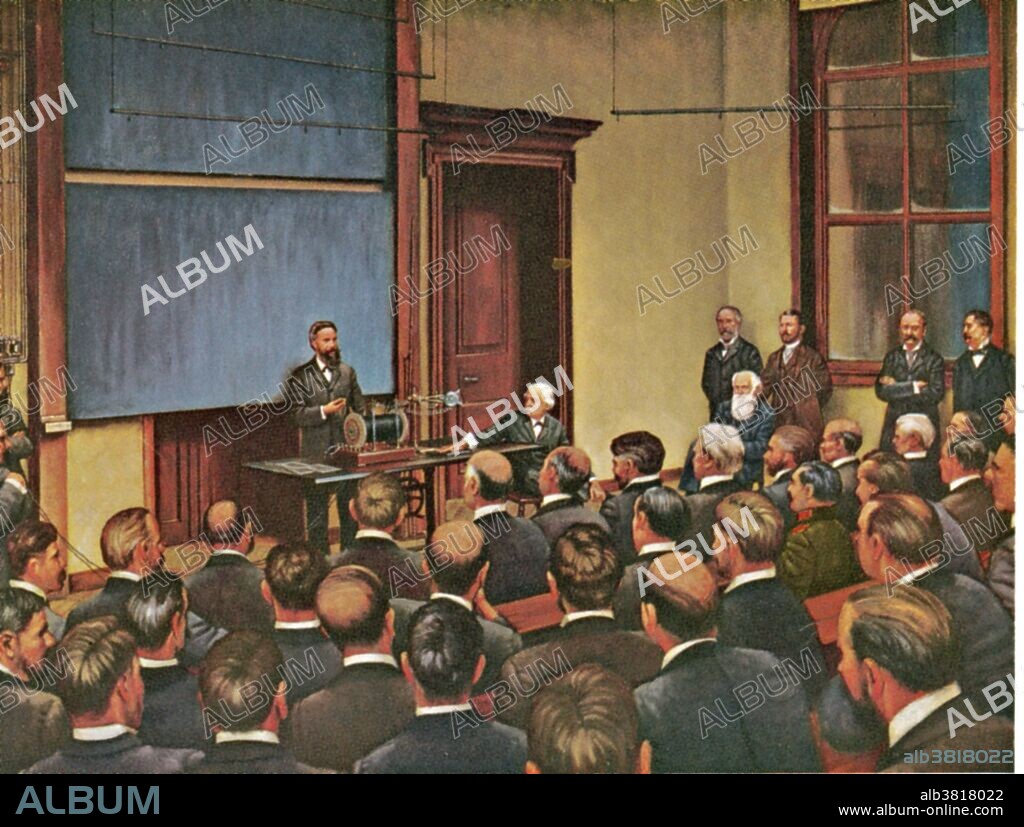alb3818022
Wilhelm Roentgen, First Demonstration of X-Rays, 1896

|
Zu einem anderen Lightbox hinzufügen |
|
Zu einem anderen Lightbox hinzufügen |



Haben Sie bereits ein Konto? Anmelden
Sie haben kein Konto? Registrieren
Dieses Bild kaufen.
Nutzung auswählen:

Titel:
Wilhelm Roentgen, First Demonstration of X-Rays, 1896
Untertitel:
Siehe automatische Übersetzung
January 23, 1896, first public demonstration of Wilhem Conrad Roentgen's newly discovered x-rays. He took an x-ray of the hand of Professor Albert von Kolliker which lead to a lively discussion about the possible medical applications of this discovery.Wilhelm Conrad Roentgen (1845-1923), German experimental physicist and discoverer of X-rays. While using a discharge tube (in which an electric discharge is passed through a gas at low pressure) in a darkened room, Roentgen noticed that a card coated with barium platinocyanide glowed when the tube was switched on. The effect was not blocked by an intervening wall, or even a thin sheet of metal. Roentgen termed this newly discovered phenomenon X-ray radiation, and suggested that it consisted of electromagnetic rays with a shorter wavelength than light. He was awarded the first Nobel Prize for Physics in 1901.
Bildnachweis:
Album / Science Source / New York Public Library
Freigaben (Releases):
Model: Nein - Eigentum: Nein
Rechtefragen?
Rechtefragen?
Bildgröße:
3924 x 2965 px | 33.3 MB
Druckgröße:
33.2 x 25.1 cm | 13.1 x 9.9 in (300 dpi)
Schlüsselwörter:
BERÜHMT • BERÜHMTE PERSÖNLICHKEIT • DEUTSCH • ENTDECKUNG • ERFAHRUNG • EUROPAEER (F M) • EUROPAEER • EUROPÄER (F M) • EUROPÄER • EUROPÄISCH • EXPERIMENT • JANUAR • MANN • NATURWISSENSCHAFTLER • NOBEL • NOBELPREIS • NOBELPREISTRAEGER • NOBELPREISTRÄGER • NOTABEL • PERSON • PERSöNLICHKEITEN • PERSÖNLICHKEITEN • PROMINENZ • VERSUCHSAUFBAU • WISSENSCHAFT: EXPERIMENT • WISSENSCHAFTLER • WISSENSCHAFTLICH
 Pinterest
Pinterest Twitter
Twitter Facebook
Facebook Link kopieren
Link kopieren Email
Email
